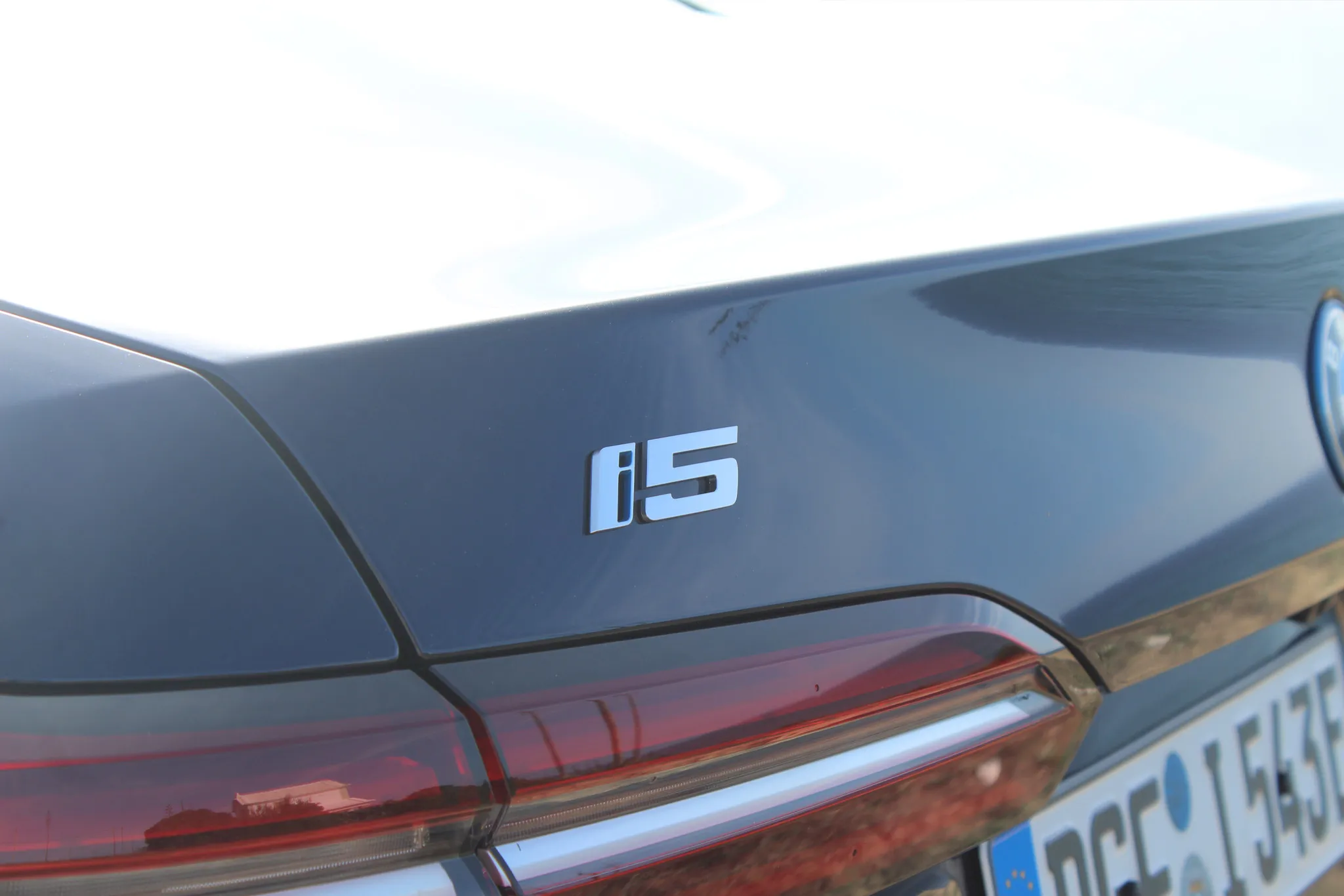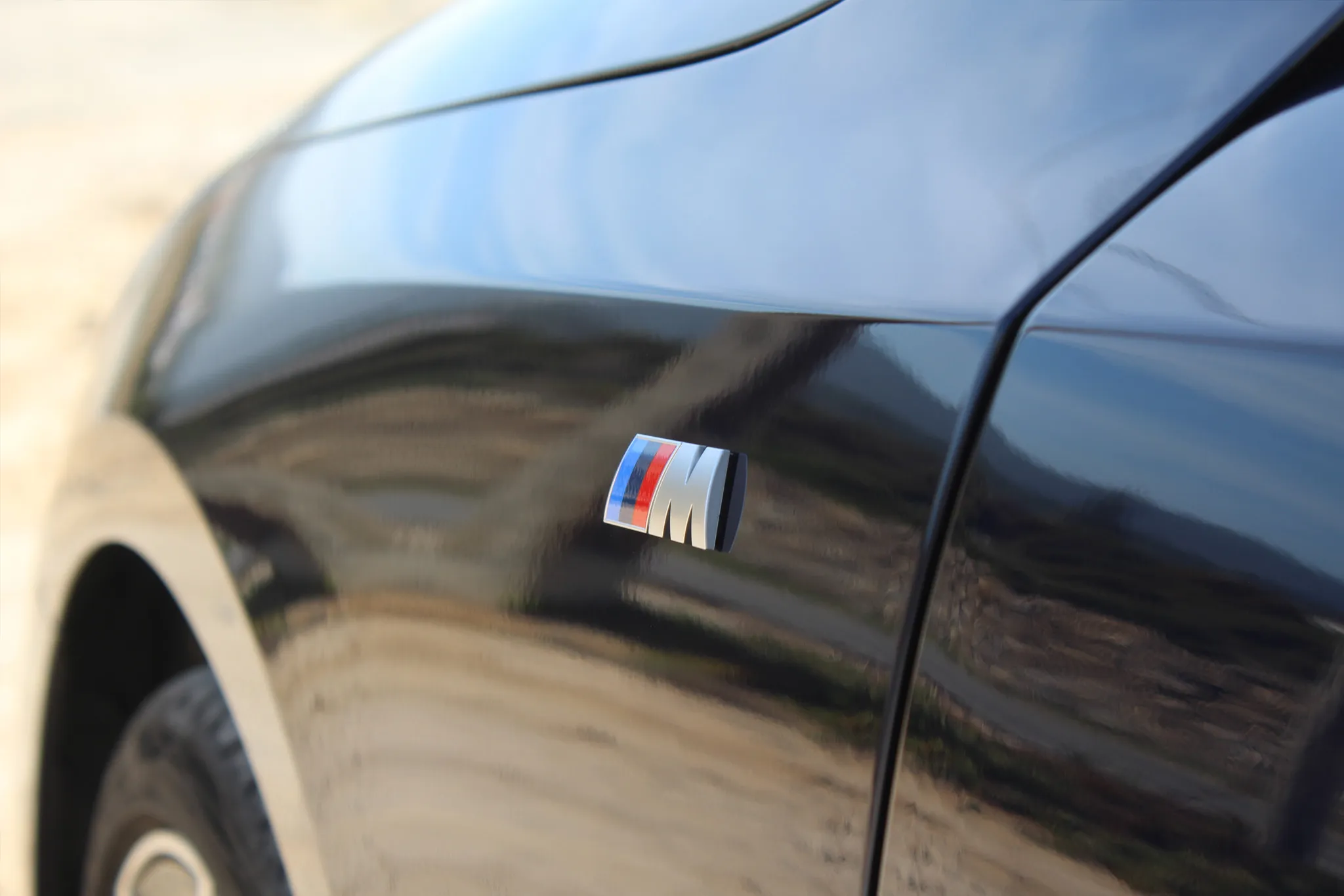The BMW 5 Series has gotten bigger every time the German automaker makes a new one. Now in its eighth generation, BMW’s mid-range luxury sedan is the largest it’s ever been. With the addition of a full-floor battery pack in the case of the i5, it’s also heavier than ever. Does it all come apart at the seams? Not really.
A drive in the all-electric i5 eDrive40—the lowest fully-electric trim making it stateside—proves the 5 Series is still intact from a driving dynamics perspective. Its growing size is noticeable, but it’s still a tight, well-riding package that doesn’t shy away from a twisty road. If you wanted something more extreme, or a return to the car’s roots, you won’t find it here. The addition of pure electric power seems natural for this car in this day and age, and with a few interesting features, it’s a solid evolution.

| 2024 BMW i5 eDrive40 Specs | |
|---|---|
| Base Price | $67,795 |
| Powertrain | single-motor electric rear-wheel drive | 83.9-kWh battery |
| Horsepower | 340 |
| Torque | 295 lb-ft |
| Curb Weight | 4,861 pounds |
| Seating Capacity | 5 |
| WLTP Range | 309-362 miles |
| Quick Take | The fully electric 5 Series may be big and heavy, but it’s still a (mostly) regular 5 Series to drive. |
| Score | 7.5/10 |
The Basics
The 5 Series has always been the mid-level BMW sedan between the iconic 3 Series and larger 7 Series. The i5 is the new, all-electric variant. All 5 Series get very similar sheet metal and interior accouterments, but what’s under the hood and the floor are different depending on whether you want a pure internal combustion, plug-in hybrid, or fully electric 5.
Inside the i5 is classic BMW, taken down a notch in terms of tactility. One large, flowing screen now forms the instrument cluster and infotainment display. It controls all of the HVAC functions, which means no physical climate controls. Even opening or closing the air vents is done with a touch-sensitive panel located below them. The materials have been mixed up, too. Where you might’ve found wood or piano black plastic before, the car can now be optioned with a more dynamic-looking ambient lighting surface. It’s all a bit of a mixed bag in terms of usability. The aesthetics have arguably improved, but at what cost?




Outside the 5 Series is thankfully more refreshing, at least within the context of modern BMW. The car lacks the ridiculous beaver teeth of the current 4 and 7 Series, opting for a pair of large horizontal openings that look reasonably proportioned in relation to the rest of the face. On the electric i5, they aren’t completely filled in—air does pass through them. They seem mostly present to house cameras and sensors, though.
The rest of the vehicle is thankfully straightforward. The taillights are inoffensive along with the rest of the vehicle. There is the slight sense that the car is a bit, uh, thicker than it used to be on account of having a battery in the floor, but it’s certainly not as bloated-looking as some other electric vehicles.




As this is an electric 5 Series, it has that instant electric torque! Tired of hearing that yet? Its peak 340 horsepower figure is only delivered in Sport mode, so at all other times, it puts out 313 hp. Something similar can be said for the peak torque figure. The max 317 lb-ft is only delivered in Sport Boost mode, which can be activated for ten seconds at a time with a paddle behind the steering wheel. It provides a noticeable improvement in performance on the highway especially, where it can be activated mid-acceleration, or at pretty much any other time. I liked this feature, although it made me want a paddle on the other side of the steering wheel to activate some aggressive regen.
Overall, the i5, like many other EVs, feels like it has more power than it does. It falls off a bit on the highway for sure—there’s only one torque curve available when it comes to permanent magnet electric motors—but it’s responsive and torquey. I even liked the fake engine noises the car made, too.


Driving Experience
Like many new BMWs, the i5 feels lighter than it is. But it does not feel smaller than it is. The steering is acceptable, and the ride is tight without being punishing, but its sheer volume on the road can’t be escaped. On slender city streets or narrow mountain roads, a little cringe tickled through me whenever another car came past. It’s spacious inside and the visibility is acceptable, but man, this thing just can’t get much bigger. It’s larger in every single dimension than the old car, which BMW seemed to think was a good thing. It’s not. The rear axle steering, available on higher trims, also felt like it needed a little tuning. Accelerating out of one tight corner, the rear wheels felt like they hadn’t quite straightened out by the time I got my foot into the accelerator. It helps in tight spaces, sure, but I think it needs a little more work on the road.
That kind of gets to the core of how the 5 Series drives and handles. It’s gradually gotten a little bit less fun every generation, but it’s still a BMW. It’s still at the top of the heap. It’s just gotten so big that now it has rear-axle steering, air springs, and other gizmos that, while maintaining the car’s image as a sharp-handling sports sedan, probably shouldn’t have to be there in the first place.
Is any of this context really palpable from the driver’s seat? Only a little. The new 5 Series is still good for what it is, it’s just not what it used to be.

The Highs and Lows
The comforting part of all of this is that the i5 gets the basics right. It has the power, it has the chassis, it has the range. Its peak WLTP-estimated range of 362 miles is probably a little ambitious, even with an 80-kWh-plus battery, but it will all come down to how and where you drive. Inside, it’s plush and comfortable with plenty of space and features.
Unfortunately, there are things that aren’t so good. No physical climate controls are a big miss, especially from BMW. And I don’t need a digital interface to control how open or closed my air vent is. That’s just silly. The size of the car also cuts both ways. Yes, it’s roomy on the inside, but it’s roomy on the outside too. If you regularly have to park in tight spaces, maybe stick with a 3 Series.
BMW i5 eDrive40 Features, Options, and Competition
The i5 I drove had a long list of options in terms of comfort, technology, and aesthetics. They included a hands-free highway driving mode called Highway Assist. It comes as a part of a suite of other driver aids that make long trips a bit easier. It works reasonably well, using a system of radar sensors and cameras to get the job done. If you’re into that kind of thing, it’s definitely worth it. From my brief drive, it was on par with GM’s Super Cruise, even if it wasn’t using any pre-loaded LiDAR data.
Like other BMWs, the i5 can also be optioned with features like different wheels, interior colors, and creature comforts like heated/cooled seats. My car had the 21-inch wheels, a white interior, and a Tanzanite Blue metallic exterior. No exact price was given, but it was likely in the neighborhood of $80,000. The base car will have small wheels, fewer color options, and fewer gizmos, but the same drivetrain and range.

All legacy automakers have an uphill battle to fight against Tesla when it comes to building electric vehicles, but among themselves, there is some fierce competition. The car most similar to this one on paper is Mercedes’ EQE 350+. If you can get over the way it looks, it will cost you a bit more money as a base car while having less power and likely less range. It is a Mercedes, though, and that comes with a slew of luxury gimmicks some people love.
Value and Verdict
Ultimately, if you want an EV with around 300 miles of range for not a lot of money, there’s always a Tesla Model 3. Legacy automakers’ EVs are different, though. They take cues from a lot of what the Texas company does, but they typically offer unique styling and interior features that Tesla doesn’t. $67,795 is a lot of money for an electric sedan that in all likelihood will get around 300 miles of real-world range, but it’s pretty reasonable as far as a 5 Series goes.
Overall, the 2024 BMW i5 eDrive40 is a solid EV that most buyers will like. Sharing basic underpinnings with the ICE and PHEV versions of the new 5 Series doesn’t have any noticeably bad side effects. Is it a slam dunk? No. It’s evolutionary. This car is a 5 Series first and an EV second. There are a few steps that I think were taken in the wrong direction, but mostly it’s a solid step forward. In a sea of electrified options, the i5 may not be a standout revolution, but it works and works well.
Email the author at peter@thedrive.com
